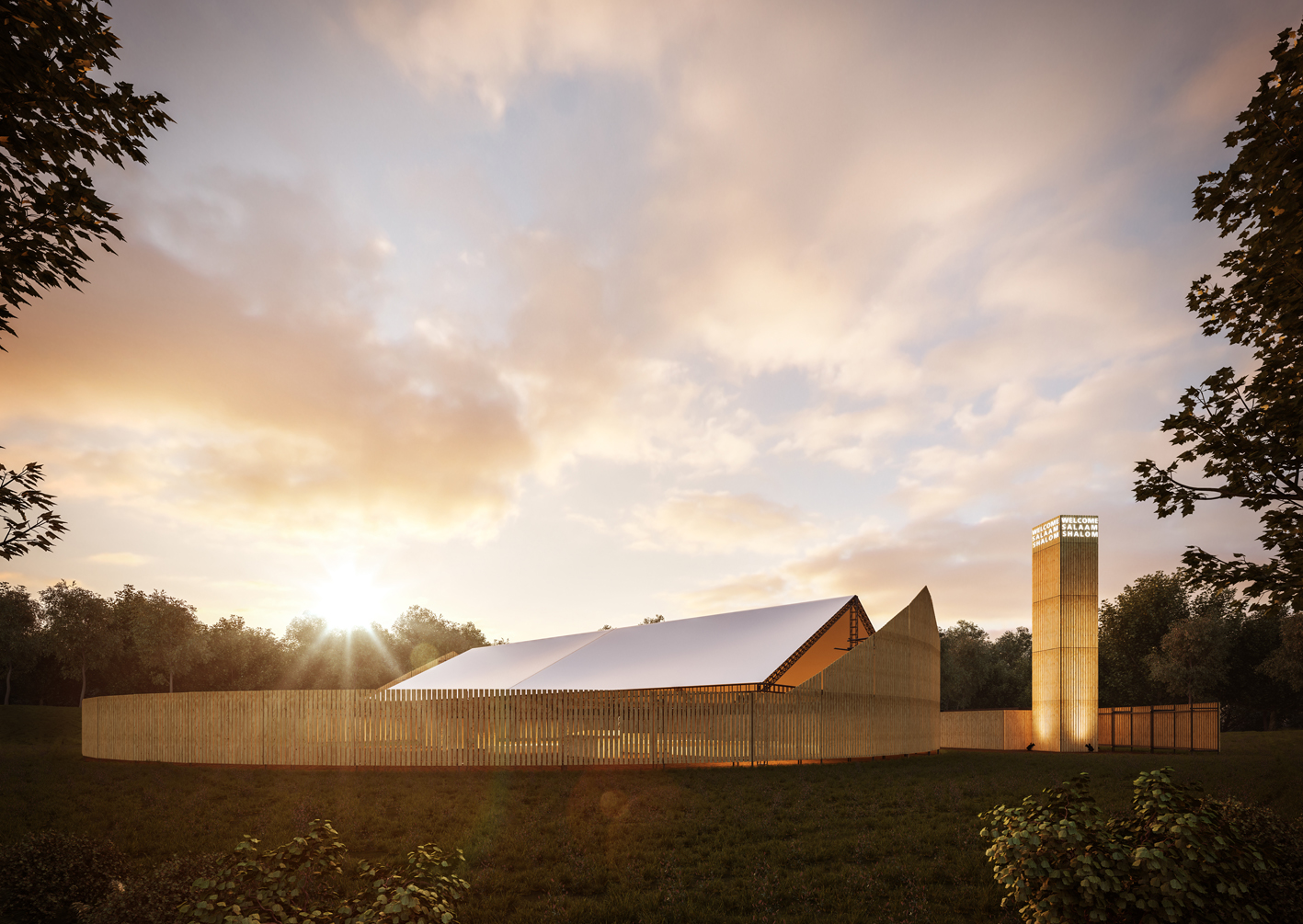How a new religious building typology that caters for multiple faiths could unite communities and “heal a fractured world.”
Words
Daniel Leon
We are in an era where secularism often overshadows the importance of religious architecture. The potential demolition of Brighton’s Modernist synagogue prompts us as a society to reconsider the intrinsic value of these religious spaces. As an architect deeply invested in the intersection of spirituality, design, and community, I propose a shift in perspective, recognizing the potential of religious architecture to foster interfaith understanding and unity.
Religious architecture is often viewed through the lens of nostalgia or dismissed as outdated remnants of the past. However, these structures can contribute meaningfully to modern Britain’s pursuit of interfaith dialogue and evolving concepts of spirituality. Spaces of worship are more than just a physical structure – they’re a living, breathing community centre, converging faith, culture, and communal belonging.
Religious spaces serve the community
Take the term ‘synagogue’, meaning ‘house of meeting’ in Greek and ‘Beit Knesset’ in modern Hebrew. The definition underscores the essential nature of these structures as gathering places. The same can be said for other faiths, with ‘church’ and ‘mosque’ defined as places of worship for their respective faiths, highlighting their innate purpose to serve as meeting points for communities.
In today’s diverse society, these buildings take on an even greater significance. This is highlighted in cities such as London, which remains the most religiously diverse region of England, with over a quarter of residents reporting a religion other than Christian in the 2021 Census.
However, the unfortunate reality is that too often, they are treated as prime real estate, neglecting their cultural and social importance. This is particularly true in cities such as London, where there is hardly any land that’s free for development.
Acknowledging how religious buildings serve communities, which are increasingly diverse, as an architect, it’s important to consider the demand for the space and further how it can best serve its community. After all, if there’s no meeting, what is its purpose? Heritage preservation is a delicate dance between the old and the new. Historically, this has been vital for hubs of civic and communal belonging and without this aspect to preservation, what we retain for future generations risks becoming simply an empty artefact.
Brighton, like many other cities, has seen a transformation in its religious demography since the 1960s. With this comes a change in requirements necessary to meet these respective faiths. The debate persists: prioritise the community or the building? Furthermore, how can we serve a growing, diverse community? These questions require a nuanced examination of resources, needs, and the sensitive balance between preserving heritage and adapting to contemporary demands.
A solution for modern-day Britain
To this end, I’ve created the ‘FridaySaturdaySunday’ building — a conceptual project fostering interfaith unity. This innovative space serves as a mosque on Fridays, a synagogue on Saturdays, and a church on Sundays. The motivation behind this project is to engender mutual respect and understanding, to break down barriers and, in the words of Rabbi Sir Jonathan Sacks, “heal a fractured world.”
Driven by the scarcity of real estate in cities such as London, the underutilisation of religious buildings (many of which are used only once a week), and consideration of cost and land use demands, this project explores the potential of tripartite worship that transcends religious boundaries. By questioning how architecture can facilitate shared worship and dialogue, this collaborative effort aims to address the palpable tensions between faith in our current society.
The ‘FridaySaturdaySunday’ project leverages design elements like natural light, beauty, washing, and water to celebrate the shared human experiences uniting Abrahamic faiths. In advocating for a renewed approach to religious architecture, I emphasise the need for spaces that encourage dialogue and shared experiences. By preserving and repurposing these structures, considering their historical and communal value, we can create spaces that transcend religious boundaries and contribute to a more harmonious society.
As we navigate an increasingly diverse society, religious architecture can be a powerful tool for fostering unity. Let’s recognise its rich history and cultural significance, preserving and repurposing these structures to build bridges between faiths in 21st-century Britain.
Daniel Leon is director of Square Feet Architects in London and is a former RIBA councillor.
Source: Architecture Today






